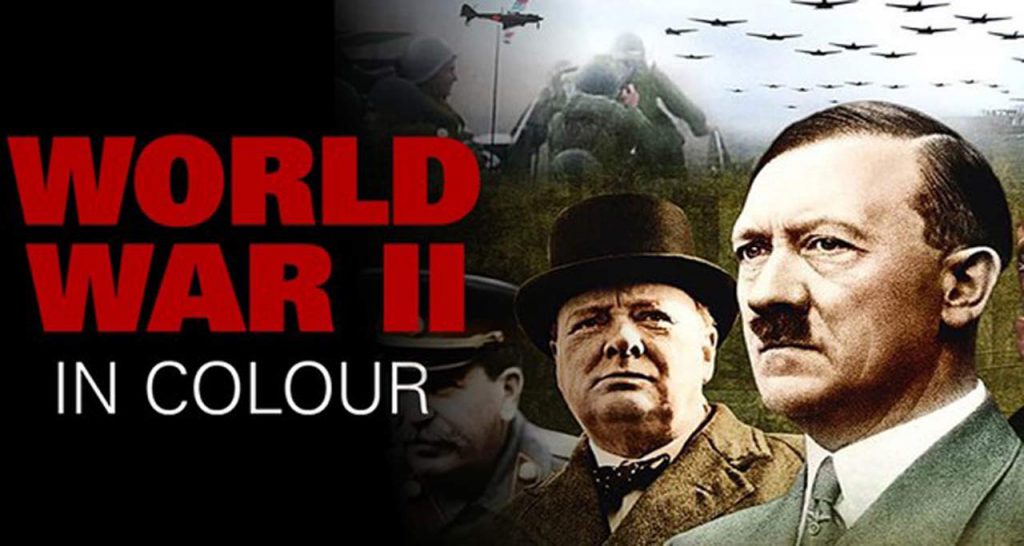World War II In HD Colour episode 11: Since December 1941, a vicious war against Japan was being waged in the Pacific. The Japanese were driven back across the ocean, island by island, in savage hand to hand fighting. American dominance at sea was finally established in “The Great Marianas Turkey Shoot”, when radar gave the US Navy advance warning of a huge Japanese attack and the last vestiges of Japanese naval air power were destroyed. But this film also looks at the war in the jungles, in places like Burma, where new specialist fighting units – like Orde Wingate’s Chindits – slowly pushed back the Japanese despite horrific conditions.
This film tells the extraordinary story of the war in North Africa and features the heroics of the tiny island of Malta as it withstood wave after wave of Nazi assault. It ends with the Allies fighting their way up Italy and Germany in retreat. World War II in Colour is a 13-episode British television docuseries recounting the major events of World War II narrated by Robert Powell. It was first broadcast in 2008–2009. The series is in full colour, combining both original and colourized footage. The show covers the Western Front, Eastern Front, North African Campaign and the Pacific War. It was on syndication in the United States on the Military Channel.
World War II In HD Colour episode 11
Battle of the Philippine Sea
The Battle of the Philippine Sea (June 19–20, 1944) was a major naval battle of World War II that eliminated the Imperial Japanese Navy’s ability to conduct large-scale carrier actions. It took place during the United States’ amphibious invasion of the Mariana Islands during the Pacific War. The battle was the last of five major “carrier-versus-carrier” engagements between American and Japanese naval forces, and pitted elements of the United States Navy’s Fifth Fleet against ships and aircraft of the Imperial Japanese Navy’s Mobile Fleet and nearby island garrisons. This was the largest carrier-to-carrier battle in history, involving 24 aircraft carriers, deploying roughly 1,350 carrier-based aircraft.
The aerial part of the battle was nicknamed the Great Marianas Turkey Shoot by American aviators for the severely disproportional loss ratio inflicted upon Japanese aircraft by American pilots and anti-aircraft gunners. During a debriefing after the first two air battles, a pilot from USS Lexington remarked “Why, hell, it was just like an old-time turkey shoot down home!” The outcome is generally attributed to a wealth of highly trained American pilots with superior tactics and numerical superiority, and new anti-aircraft ship defensive technology (including the top-secret anti-aircraft proximity fuze), vs. the Japanese use of replacement pilots with not enough flight hours in training and little or no combat experience. Also, the Japanese defensive plans were directly obtained by the Allies from the plane wreckage of the commander-in-chief of the Imperial Japanese Navy’s Combined Fleet, Admiral Mineichi Koga, in March 1944.
